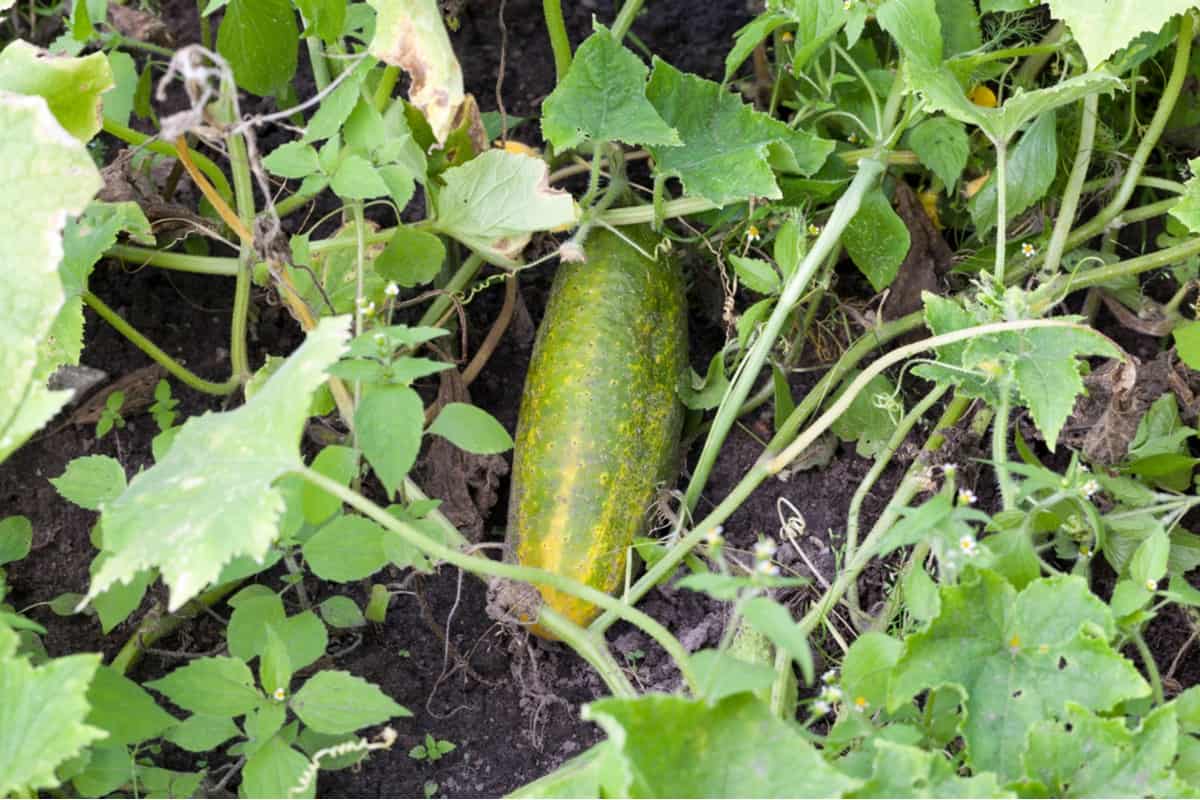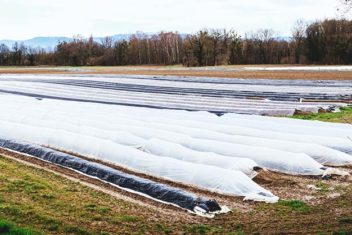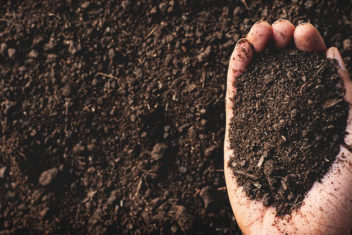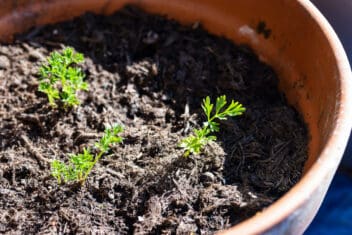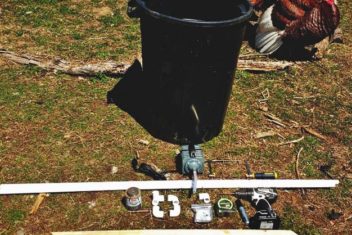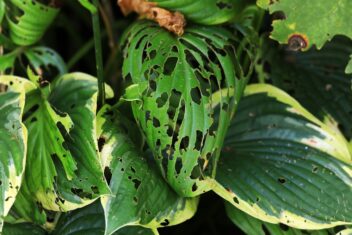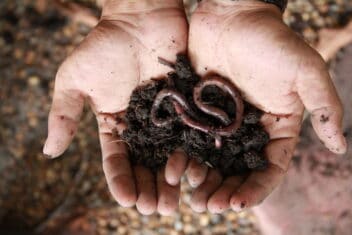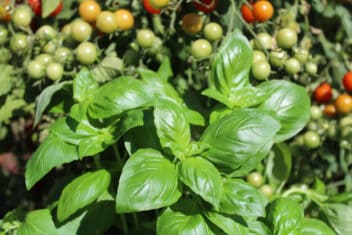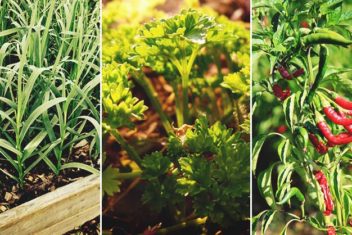Cucumbers are a favorite vegetable in many households. They’re used for salads, sandwiches and other types of dishes.
However, what should you do if your cucumbers turn yellow? If left on the vine too long, they will turn from their natural green color to a light yellow hue. This is often due to an overabundance of sun exposure or because they were not watered enough.
That said, some types of cucumbers are actually meant to be yellow – so you shouldn’t panic if you find them growing in your garden by accident.
Here are some tips to help you deal with yellow cucumbers – and prevent them (or not!) in the future.
The Problem With Yellow Cucumbers
For the most part, cucumbers are meant to be harvested when they’re small, crisp, and green.
Let them become large and yellow, and they’re not going to look or taste great. The aesthetic issues are obvious – they just don’t look like cucumbers.
Plus, these cucumbers are bitter, since they’re so overripe. Overripe cucumbers also tend to have lots of seeds and an unpleasant texture.
Sometimes, yellow cucumbers signal the presence of a disease or pest infestation or even a nutrient imbalance. Therefore, if you notice lots of yellow cucumber popping up in your garden, you need to play detective to figure out the cause.
What Causes Yellowing in Cucumbers – and How to Address
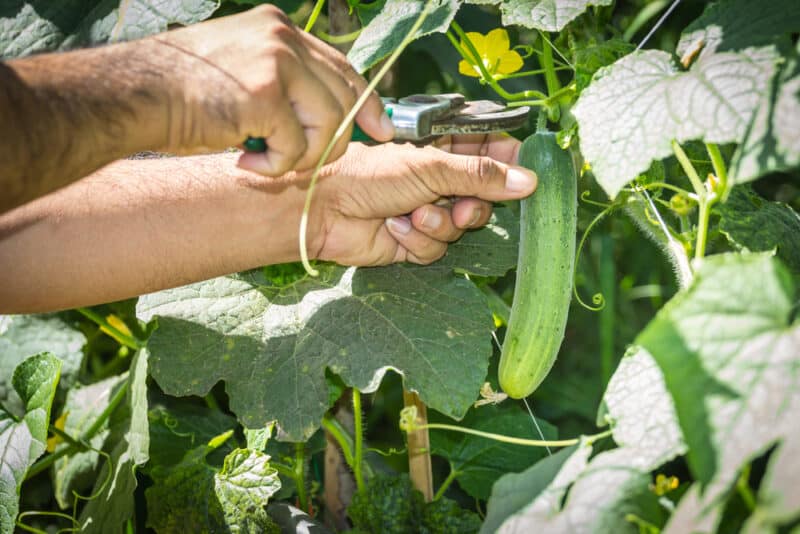
There are several reasons why your cucumbers might turn yellow. The most common are issues with harvesting and allowing your cucumbers to become overripe, but if you know that wasn’t the case, there are a few other culprits to pay attention to as well.
Here’s what you should know.
1. Problems in Harvesting
As I mentioned earlier, the most likely reason why your cucumbers turned yellow was that you didn’t harvest them at the right time.
Cucumbers grow rapidly, so if you leave them on the vine too long, they can get too large and will turn yellow. The yellowing indicates that the green coloring produced by the chlorophyll has begun to fade. As cucumbers get older and larger, they get extremely bitter.
These vegetables are ripe and ready for harvest anywhere between 50-70 days after planting.
Typically, cucumber is considered ripe when it is dark green, firm, and the right length for the variety (pickling varieties will be ready for harvest, obviously, when they are much smaller than other types of cucumbers).
If you can avoid it, don’t harvest a cucumber when it’s yellow, puffy, or has wrinkled or sunken tips. These are overripe and need to be discarded.
Technically, you should harvest a cucumber before it’s totally mature. You can pick cucumbers at any time after they’ve appeared on the vine – you don’t have to wait for them to reach a particular size. To avoid yellow cucumbers, select smaller ones between 2-8-inches long.
If you plan on growing cucumbers for pickling, again, pick them when they’re smaller. Since cucumbers grow so rapidly, you may have to consider harvesting every day or every other day so you don’t miss any.
2. Problems With Watering
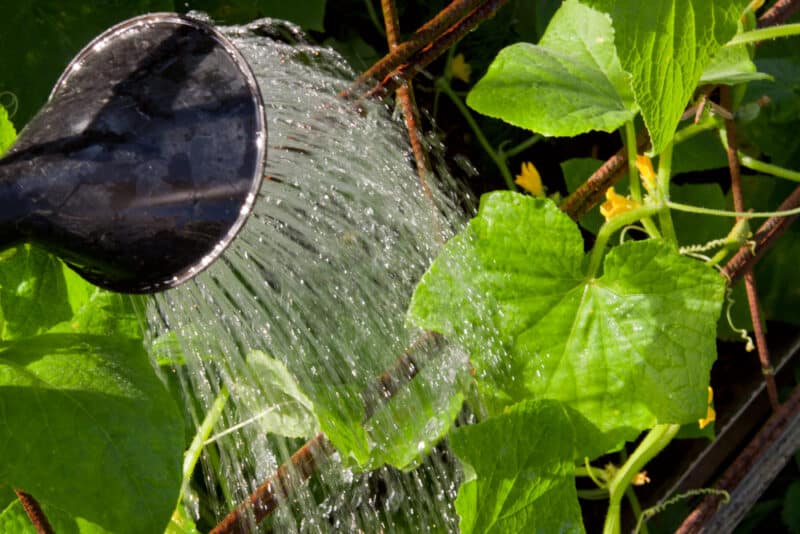
Cucumber plants have very shallow roots and require frequent watering. Because of this, it is easy to either over water or underwater your plants.
If your small cucumbers that are just forming are becoming yellow, an issue with watering could be to blame. Provide 1-2-inches of water per week, ideally split into shorter, more frequent sessions.
3. Nutrient Imbalance
Of course, a nutrient imbalance can cause cucumbers to become yellow, too. Too little magnesium, nitrogen, potassium, and phosphorus can all cause similar symptoms. Yellowing is one of the most prevalent.
You should only assume a nutrient imbalance is to blame if you notice other problems with your plants, too, such as plants that have drooping, curved leaves, or have transparent spots between the veins.
If a nutrient deficiency is the problem, you can address it with a balanced fertilizer or some compost tea. Conducting a soil test between growing seasons is the best way to identify a nutrient deficiency and treat it moving forward.
4. Viruses
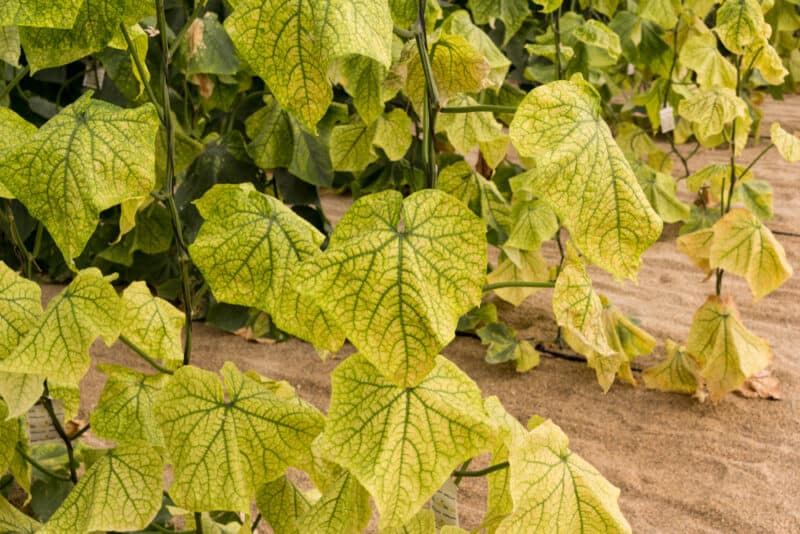
Several viruses cause cucumbers to turn yellow, too.
One of the most common is cucumber vein yellowing virus. This is less likely to affect the fruits of the plants than it is the plants themselves – typically, cucumber vein yellowing virus will cause a mottling or mosaic pattern in yellow shades on the leaves.
Of course, it can affect the fruit, too, but it doesn’t always. This depends on when it infects the plant – early infections often result in zero fruit production at all. Later infections, however, can cause fruits that appear to be deformed and discolored.
5. Fungal Problems
Certain fungal diseases can cause cucumbers to become yellow. Anthracnose typically appears as yellowish areas on leaf tissue, but it can affect fruits as well. Cercospora leaf spot is similar in this effect.
6. Striped Cucumber Beetles
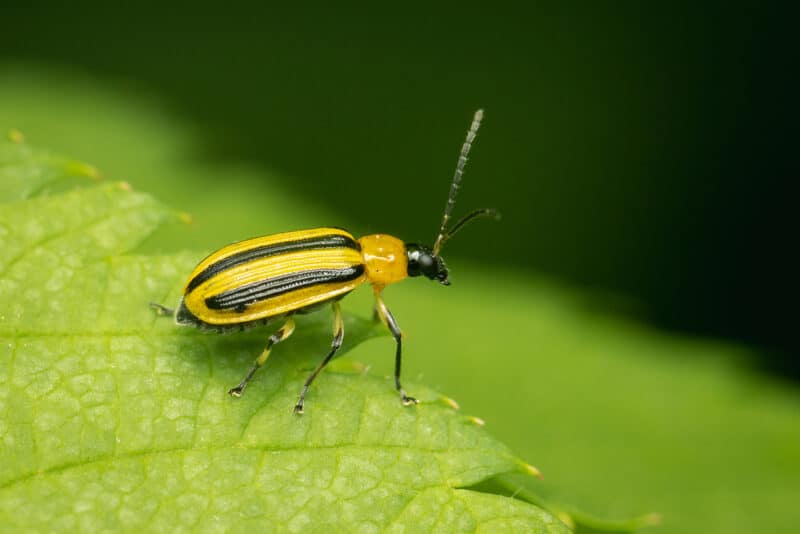
One pest that can cause cucumbers to become discolored is the striped cucumber beetle. This pest is found on all kinds of cucurbit plants, including cucumbers, with the feeding most evident on the foliage and stem of the plant.
The problem with striped cucumber beetles is that they can transmit all kinds of diseases (including cucumber vein yellowing virus and bacterial wilt). This can affect the color and total yield of your cucumber plants.
7. Some Varieties Are Just Yellow!
Finally, know that your cucumbers may be perfectly healthy and harvested at just the right time – they are just naturally yellow!
If you aren’t sure what you planted, check the label. Some cucumbers are naturally yellow. These include varieties such as:
- Yellow Submarine
- Lemon Yellow
- Chinese Yellow
- Apple Cucumber
- Dosakaya
- Poona Kheera
- Honey Plus Hybrid
- Salt and Pepper
These are perfectly safe to eat, even when they’re harvested yellow, and taste just great – no bitterness at all!
While most cucumbers are naturally green, there are plenty of yellow varieties (and even white varieties!) out there for you to enjoy, too.
What to Do With Yellow Cucumbers
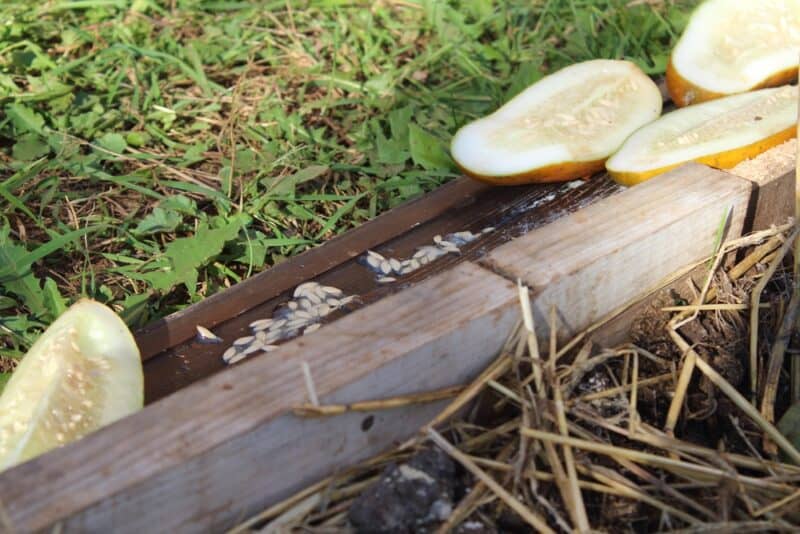
If your cucumbers are yellow and they’re supposed to be yellow, well – it more or less goes without saying that you can probably just let them do their thing! Continue to allow them to grow and then harvest and process them as normal.
However, if your cucumbers are yellow because they are overripe, you’ll have to figure out something else to do with them.
While you can certainly eat yellow cucumbers fresh, they are going to taste bitter, seedy, and tough. They definitely won’t be as palatable as the typical green, ripe ones you love to harvest, but they won’t be dangerous to eat by any means.
You can try pickling them or turning them into relish. The pickling ingredients used in these sorts of recipes tend to be so strong that they mask the bitter taste of the overripe cucumbers.
If you don’t want to eat them, go ahead and recycle them. Don’t throw them in the trash! They provide a valuable source of nitrogen to the compost pile and can also be fed to livestock, like pigs and chickens. My pigs love eating those massive cucumbers that are too big and bitter for me to do anything else with!
One final option? Save the seeds for next year’s garden.
Overripe, yellow cucumbers tend to have far more seeds than regular cucumbers do, meaning you can harvest them without a lot of extra effort. Remove the seeds, let them dry, and plant them in your garden next year.
This year’s gardening mistake could be next year’s bountiful harvest – follow these tips, and you’ll only get green goddesses growing in your garden next season.
